TL/ DR
We have discussed how AI and Web3 can complement each other by leveraging their strengths across various vertical industries such as computing networks, agency platforms, and consumer applications. When focusing on the vertical field of data resources, emerging Web projects provide new possibilities for data acquisition, sharing, and utilization.
- Traditional data providers struggle to meet the demand for high-quality, real-time verifiable data from AI and other data-driven industries, particularly in terms of transparency, user control, and privacy protection.
- Web3 solutions are reshaping the data ecosystem. Technologies such as MPC, zero-knowledge proofs, and TLS Notary ensure the authenticity and privacy protection of data as it circulates among multiple sources, while distributed storage and edge computing provide greater flexibility and efficiency for real-time data processing.
- Among them, the emerging infrastructure of decentralized data networks has given rise to several representative projects such as OpenLayer (a modular real data layer), Grass (utilizing users' idle bandwidth and a decentralized crawler node network), and Vana (a user data sovereignty Layer 1 network), each opening new prospects for AI training and applications through different technological paths.
- Through crowdsourced capacity, trustless abstraction layers, and token-based incentive mechanisms, decentralized data infrastructure can offer more private, secure, efficient, and economical solutions than Web2 super-scale service providers, empowering users with control over their data and related resources, and building a more open, secure, and interconnected digital ecosystem.

1. Data Demand Wave
Data has become a key driver of innovation and decision-making across industries. UBS predicts that the global data volume is expected to grow more than tenfold from 2020 to 2030, reaching 660 ZB. By 2025, the global data generated per person per day will reach 463 EB (Exabytes, 1EB = 1 billion GB). The Data as a Service (DaaS) market is rapidly expanding; according to a report by Grand View Research, the global DaaS market was valued at $14.36 billion in 2023 and is expected to grow at a compound annual growth rate of 28.1%, ultimately reaching $76.8 billion by 2030. Behind these high-growth figures is the demand for high-quality, real-time reliable data across multiple industry sectors.
AI model training relies on large data inputs to identify patterns and adjust parameters. After training, datasets are also needed to test the model's performance and generalization ability. Additionally, AI agents, as a foreseeable new form of intelligent applications, require real-time reliable data sources to ensure accurate decision-making and task execution.
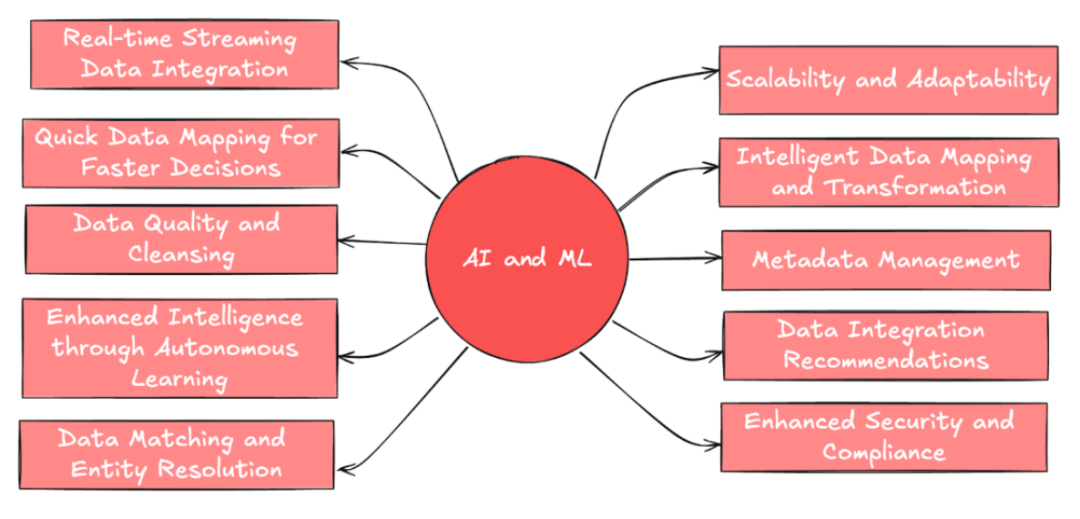
(Source: Leewayhertz)
The demand for business analytics is also becoming diverse and widespread, becoming a core tool driving enterprise innovation. For example, social media platforms and market research companies need reliable user behavior data to formulate strategies and gain insights into trends, integrating diverse data from multiple social platforms to build a more comprehensive profile.
For the Web3 ecosystem, reliable real data is also needed on-chain to support new financial products. As more new assets are being tokenized, flexible and reliable data interfaces are required to support the development of innovative products and risk management, allowing smart contracts to execute based on verifiable real-time data.
In addition to the above, there are also research, the Internet of Things (IoT), and more. New use cases reveal a surge in demand for diverse, real, and real-time data across industries, while traditional systems may struggle to cope with the rapidly growing data volume and ever-changing demands.

2. Limitations and Issues of Traditional Data Ecosystem
A typical data ecosystem includes data collection, storage, processing, analysis, and application. The centralized model is characterized by centralized data collection and storage, managed and operated by core enterprise IT teams, and implementing strict access controls.
For example, Google's data ecosystem encompasses multiple data sources from search engines, Gmail, to the Android operating system, collecting user data through these platforms, storing it in globally distributed data centers, and then using algorithms to process and analyze it to support the development and optimization of various products and services.
In the financial market, for instance, data and infrastructure provider LSEG (formerly Refinitiv) obtains real-time and historical data from global exchanges, banks, and other major financial institutions, while leveraging its own Reuters News network to collect market-related news, using proprietary algorithms and models to generate analytical data and risk assessments as additional products.
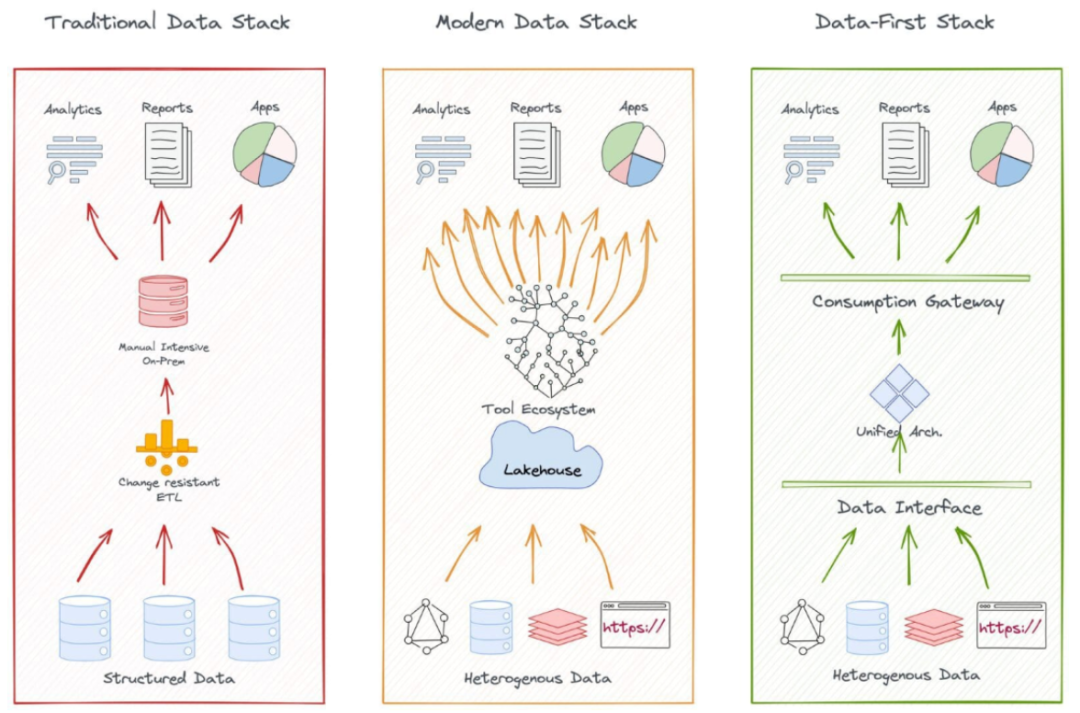
(Source: kdnuggets.com)
Traditional data architectures are effective in professional services, but the limitations of centralized models are becoming increasingly apparent. Particularly in terms of coverage of emerging data sources, transparency, and user privacy protection, traditional data ecosystems are facing challenges. Here are a few aspects:
- Insufficient Data Coverage: Traditional data providers face challenges in quickly capturing and analyzing emerging data sources such as social media sentiment and IoT device data. Centralized systems struggle to efficiently acquire and integrate "long-tail" data from numerous small-scale or non-mainstream sources.
For example, the 2021 GameStop incident revealed the limitations of traditional financial data providers in analyzing social media sentiment. Investor sentiment on platforms like Reddit rapidly changed market trends, but data terminals like Bloomberg and Reuters failed to capture these dynamics in a timely manner, leading to delayed market predictions.
- Limited Data Accessibility: Monopolies restrict accessibility. Many traditional providers open some data through APIs/cloud services, but high access costs and complex authorization processes still increase the difficulty of data integration.
On-chain developers find it difficult to quickly access reliable off-chain data, with high-quality data monopolized by a few giants, leading to high access costs.
- Data Transparency and Credibility Issues: Many centralized data providers lack transparency regarding their data collection and processing methods, and there is a lack of effective mechanisms to verify the authenticity and completeness of large-scale data. Verifying large-scale real-time data remains a complex issue, and the centralized nature also increases the risk of data being tampered with or manipulated.
- Privacy Protection and Data Ownership: Large tech companies commercially exploit user data on a large scale. As creators of private data, users find it difficult to receive the value they deserve in return. Users often cannot understand how their data is collected, processed, and used, nor can they decide the scope and manner of data usage. Excessive collection and use also lead to serious privacy risks.
For example, the Cambridge Analytica incident involving Facebook exposed significant gaps in traditional data providers regarding data usage transparency and privacy protection.
- Data Silos: Additionally, real-time data from different sources and formats is difficult to integrate quickly, affecting the possibility of comprehensive analysis. Much data is often locked within organizations, limiting cross-industry and cross-organization data sharing and innovation, and the data silo effect hinders cross-domain data integration and analysis.
For instance, in the consumer industry, brands need to integrate data from e-commerce platforms, physical stores, social media, and market research, but this data may be difficult to integrate due to inconsistent platform formats or isolation. Similarly, shared mobility companies like Uber and Lyft, while collecting vast amounts of real-time data from users regarding traffic, passenger demand, and geographic location, cannot share and integrate this data due to competitive relationships.
In addition, there are issues of cost efficiency, flexibility, and more. Traditional data providers are actively addressing these challenges, but the emerging Web3 technology offers new ideas and possibilities for solving these problems.

3. Web3 Data Ecosystem
Since the release of decentralized storage solutions like IPFS (InterPlanetary File System) in 2014, a series of emerging projects have emerged in the industry, aiming to address the limitations of traditional data ecosystems. We see that decentralized data solutions have formed a multi-layered, interconnected ecosystem covering all stages of the data lifecycle, including data generation, storage, exchange, processing and analysis, verification and security, as well as privacy and ownership.
- Data Storage: The rapid development of Filecoin and Arweave proves that decentralized storage (DCS) is becoming a paradigm shift in the storage field. DCS solutions reduce single points of failure risk through distributed architecture while attracting participants with more competitive cost-effectiveness. With a series of scalable application cases emerging, DCS storage capacity has seen explosive growth (for example, the total storage capacity of the Filecoin network reached 22 exabytes by 2024).
- Processing and Analysis: Decentralized data computing platforms like Fluence improve the real-time nature and efficiency of data processing through edge computing technology, particularly suitable for applications that require high real-time performance, such as IoT and AI inference. Web3 projects utilize technologies like federated learning, differential privacy, trusted execution environments, and fully homomorphic encryption to provide flexible privacy protection and trade-offs at the computing layer.
- Data Market/Exchange Platforms: To facilitate the quantification and circulation of data value, Ocean Protocol creates efficient and open data exchange channels through tokenization and DEX mechanisms, for example, helping traditional manufacturing companies (Daimler, the parent company of Mercedes-Benz) collaborate to develop data exchange markets to assist in data sharing for supply chain management. On the other hand, Streamr has created a permissionless, subscription-based data stream network suitable for IoT and real-time analysis scenarios, demonstrating excellent potential in transportation and logistics projects (for example, in collaboration with Finland's smart city project).
As data exchange and utilization become increasingly frequent, the authenticity, credibility, and privacy protection of data have become critical issues that cannot be ignored. This has prompted the Web3 ecosystem to extend innovation into the fields of data verification and privacy protection, giving rise to a series of groundbreaking solutions.
3.1 Innovations in Data Verification and Privacy Protection
Many Web3 technologies and native projects are dedicated to addressing the issues of data authenticity and private data protection. In addition to technologies like ZK and MPC, the emerging verification method known as Transport Layer Security Notary (TLS Notary) is particularly noteworthy.
Introduction to TLS Notary
Transport Layer Security (TLS) is a widely used encryption protocol for network communication, designed to ensure the security, integrity, and confidentiality of data transmission between clients and servers. It is a common encryption standard in modern network communication, used in various scenarios such as HTTPS, email, and instant messaging.
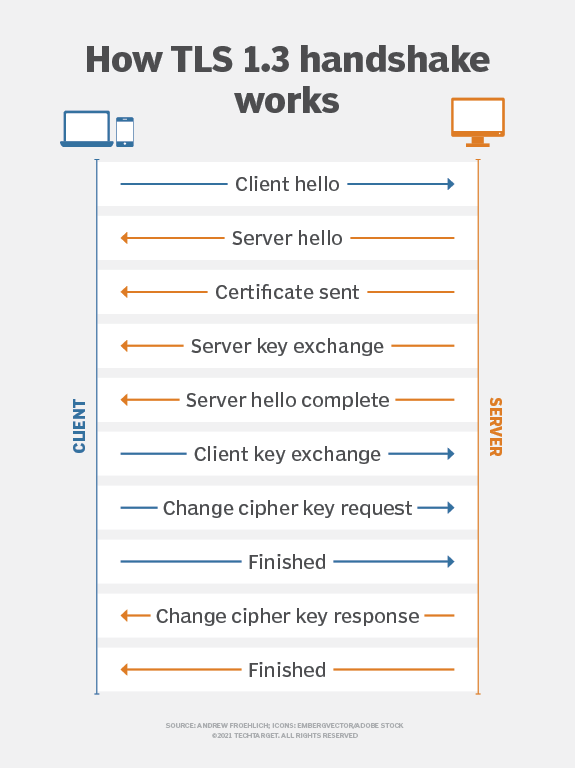
When it was born a decade ago, the initial goal of TLS Notary was to verify the authenticity of TLS sessions by introducing a third-party "notary" outside the client (Prover) and server.
Using key splitting technology, the master key of the TLS session is divided into two parts, held by the client and the notary, respectively. This design allows the notary to participate in the verification process as a trusted third party without accessing the actual communication content. This notary mechanism aims to detect man-in-the-middle attacks, prevent fraudulent certificates, ensure that communication data is not tampered with during transmission, and allow trusted third parties to confirm the legitimacy of communication while protecting communication privacy.
As a result, TLS Notary provides secure data verification and effectively balances verification needs with privacy protection.
In 2022, the TLS Notary project was rebuilt by the Ethereum Foundation's Privacy and Scaling Explorations (PSE) research lab. The new version of the TLS Notary protocol was rewritten from scratch in Rust, incorporating more advanced cryptographic protocols (such as MPC). The new protocol features allow users to prove the authenticity of the data they receive from servers to third parties without disclosing the content of the data. While maintaining the core verification functions of the original TLS Notary, it significantly enhances privacy protection capabilities, making it more suitable for current and future data privacy needs.
Variants and Extensions of TLS Notary
In recent years, TLS Notary technology has continued to evolve, giving rise to several variants that further enhance privacy and verification functions:
- zkTLS: A privacy-enhanced version of TLS Notary that combines ZKP technology, allowing users to generate encrypted proofs of web data without exposing any sensitive information. It is suitable for communication scenarios that require extremely high privacy protection.
- 3P-TLS (Three-Party TLS): Introduces three parties: the client, server, and auditor, allowing the auditor to verify the security of communication without disclosing the content. This protocol is very useful in scenarios that require transparency while also demanding privacy protection, such as compliance reviews or audits of financial transactions.
Web3 projects use these cryptographic technologies to enhance data verification and privacy protection, breaking data monopolies, addressing data silos, and ensuring trustworthy transmission, allowing users to prove ownership of social media accounts, shopping records for financial lending, bank credit records, professional backgrounds, and educational certifications without disclosing privacy, such as:
- Reclaim Protocol uses zkTLS technology to generate zero-knowledge proofs of HTTPS traffic, allowing users to securely import activity, reputation, and identity data from external websites without exposing sensitive information.
- zkPass combines 3P-TLS technology, allowing users to verify real-world private data without leakage, widely applied in KYC, credit services, and compatible with HTTPS networks.
- Opacity Network, based on zkTLS, allows users to securely prove their activities across various platforms (such as Uber, Spotify, Netflix, etc.) without directly accessing the APIs of these platforms, achieving cross-platform activity proof.
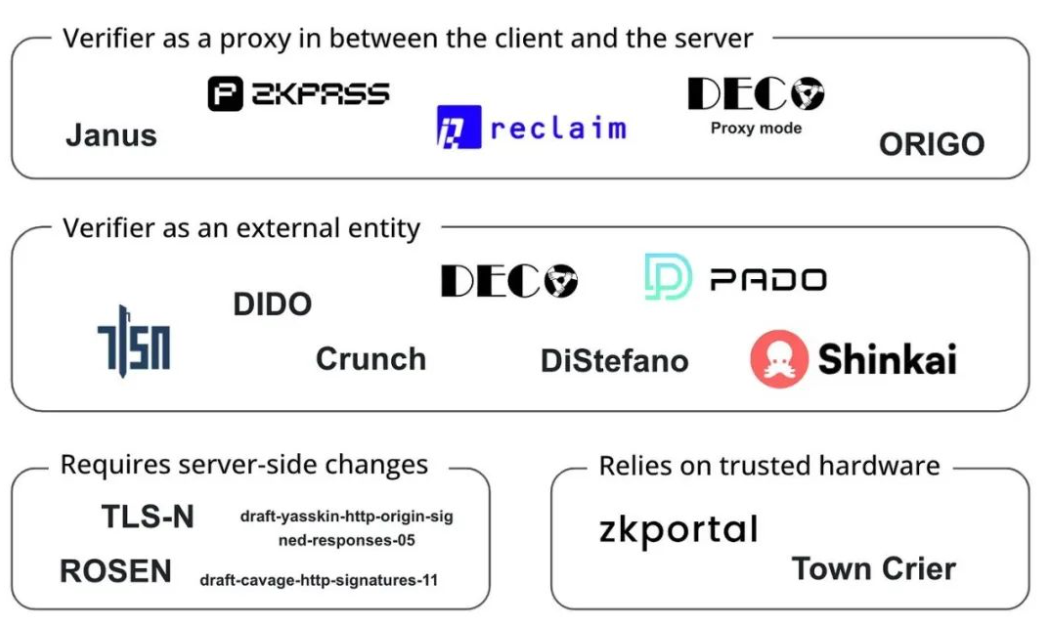
(Projects working on TLS Oracles, Source: Bastian Wetzel)
Web3 data verification, as an important link in the data ecosystem chain, has broad application prospects, and its thriving ecosystem is guiding a more open, dynamic, and user-centered digital economy. However, the development of authenticity verification technology is just the beginning of building a new generation of data infrastructure.

4. Decentralized Data Networks
Some projects combine the aforementioned data verification technologies to explore more deeply in the upstream of the data ecosystem, namely data traceability, distributed data collection, and trustworthy transmission. Below, we focus on several representative projects: OpenLayer, Grass, and Vana, which demonstrate unique potential in building a new generation of data infrastructure.
4.1 OpenLayer
OpenLayer is one of the a16z Crypto Spring 2024 crypto startup accelerator projects, serving as the first modular authentic data layer, dedicated to providing an innovative modular solution for coordinating data collection, verification, and transformation to meet the needs of both Web2 and Web3 companies. OpenLayer has attracted support from well-known funds and angel investors, including Geometry Ventures and LongHash Ventures.
Traditional data layers face multiple challenges: a lack of trusted verification mechanisms, limited accessibility due to reliance on centralized architectures, a lack of interoperability and liquidity between different systems, and no fair data value distribution mechanism.
A more concrete issue is that today, AI training data is becoming increasingly scarce. Many websites on the public internet have begun to implement anti-scraping measures to prevent AI companies from scraping data on a large scale.
In terms of private proprietary data, the situation is even more complex, as many valuable data are stored in a privacy-protective manner due to their sensitive nature, lacking effective incentive mechanisms. In this situation, users cannot safely obtain direct benefits by providing private data, making them reluctant to share this sensitive data.
To address these issues, OpenLayer combines data verification technology to build a Modular Authentic Data Layer and coordinates the processes of data collection, verification, and transformation through decentralization and economic incentives, providing a more secure, efficient, and flexible data infrastructure for Web2 and Web3 companies.
4.1.1 Core Components of OpenLayer's Modular Design
OpenLayer provides a modular platform to simplify the processes of data collection, trusted verification, and transformation:
a) OpenNodes
OpenNodes is the core component responsible for decentralized data collection within the OpenLayer ecosystem, collecting data through user mobile applications, browser extensions, and other channels. Different operators/nodes can optimize returns by executing the most suitable tasks based on their hardware specifications.
OpenNodes supports three main types of data to meet the needs of different types of tasks:
- Publicly available internet data (such as financial data, weather data, sports data, and social media streams)
- User private data (such as Netflix viewing history, Amazon order records, etc.)
- Self-reported data from secure sources (such as data signed by proprietary owners or verified by specific trusted hardware).
Developers can easily add new data types, specify new data sources, requirements, and data retrieval methods, and users can choose to provide de-identified data in exchange for rewards. This design allows the system to continuously expand to accommodate new data needs, and the diverse data sources enable OpenLayer to provide comprehensive data support for various application scenarios, lowering the barriers to data provision.
b) OpenValidators
OpenValidators is responsible for data verification after collection, allowing data consumers to confirm that the data provided by users matches the data source completely. All provided verification methods can be proven through encryption, and verification results can be confirmed afterward. The same type of proof can be offered by multiple different providers. Developers can choose the most suitable verification provider based on their needs.
In initial use cases, particularly for public or private data from internet APIs, OpenLayer uses TLS Notary as a verification solution to export data from any web application and prove the authenticity of the data without compromising privacy.
Not limited to TLS Notary, thanks to its modular design, the verification system can easily integrate other verification methods to accommodate different types of data and verification needs, including but not limited to:
- Attested TLS connections: Establishing certified TLS connections using Trusted Execution Environments (TEE) to ensure the integrity and authenticity of data during transmission.
- Secure Enclaves: Using hardware-level secure isolation environments (such as Intel SGX) to process and verify sensitive data, providing a higher level of data protection.
- ZK Proof Generators: Integrating ZKP to allow verification of data attributes or computation results without disclosing the original data.
c) OpenConnect
OpenConnect is the core module responsible for data transformation within the OpenLayer ecosystem, ensuring the usability of data and interoperability between different systems to meet the needs of various applications. For example:
- Converting data into on-chain oracle formats for direct use by smart contracts.
- Transforming unstructured raw data into structured data for preprocessing for AI training and other purposes.
For data from user private accounts, OpenConnect provides data anonymization features to protect privacy and offers components to enhance security during the data sharing process, reducing data leakage and misuse. To meet the real-time data needs of applications like AI and blockchain, OpenConnect supports efficient real-time data transformation.
Currently, through integration with Eigenlayer, OpenLayer AVS operators monitor data request tasks, responsible for fetching data and verifying it, then reporting the results back to the system. By staking or re-staking assets through EigenLayer, they provide an economic guarantee for their actions. If malicious behavior is confirmed, there is a risk of staked assets being confiscated. As one of the earliest AVS (Active Verification Service) on the EigenLayer mainnet, OpenLayer has attracted over 50 operators and $4 billion in re-staked assets.
Overall, the decentralized data layer built by OpenLayer expands the range and diversity of available data without sacrificing practicality and efficiency, while ensuring the authenticity and integrity of data through cryptographic technology and economic incentives. Its technology has broad practical use cases for Web3 Dapps seeking off-chain information, AI models that require real inputs for training and inference, and companies looking to segment and target users based on existing identities and reputations. Users are also able to monetize their private data.
4.2 Grass
Grass is the flagship project developed by Wynd Network, aimed at creating a decentralized web crawler and AI training data platform. By the end of 2023, the Grass project completed a $3.5 million seed round financing led by Polychain Capital and Tribe Capital. Shortly after, in September 2024, the project welcomed a Series A financing round led by HackVC, with participation from well-known investment institutions such as Polychain, Delphi, Lattice, and Brevan Howard.
We mentioned that AI training requires new data exposure, and one solution is to use multiple IPs to bypass data access permissions for feeding data to AI. Grass was created with this in mind, establishing a distributed network of crawler nodes dedicated to collecting and providing verifiable datasets for AI training using users' idle bandwidth in a decentralized physical infrastructure. Nodes route web requests through users' internet connections, access public websites, and compile structured datasets. It employs edge computing technology for preliminary data cleaning and formatting, enhancing data quality.
Grass utilizes a Solana Layer 2 Data Rollup architecture, built on Solana to improve processing efficiency. Grass uses validators to receive, verify, and batch process web transactions from nodes, generating ZK proofs to ensure data authenticity. Verified data is stored in a data ledger (L2) and linked to the corresponding L1 chain for proof.
4.2.1 Main Components of Grass
a) Grass Nodes
Similar to OpenNodes, end users install the Grass app or browser extension and run it, utilizing idle bandwidth for web crawling operations. Nodes route web requests through users' internet connections, access public websites, and compile structured datasets, using edge computing technology for preliminary data cleaning and formatting. Users earn GRASS token rewards based on the bandwidth and data they contribute.
b) Routers
Connecting Grass nodes and validators, managing the node network and relaying bandwidth. Routers are incentivized to operate and earn rewards, with the reward ratio proportional to the total validated bandwidth relayed through them.
c) Validators
Receive, verify, and batch process web transactions from routers, generating ZK proofs and using a unique set of keys to establish TLS connections, selecting appropriate cipher suites for communication with target web servers. Grass currently employs centralized validators, with plans to transition to a validator committee in the future.
d) ZK Processors
Receive proofs generated by validators for each node session's data, batch process the validity proofs of all web requests, and submit them to Layer 1 (Solana).
e) Grass Data Ledger (Grass L2)
Stores complete datasets and links to the corresponding L1 chain (Solana) for proof.
f) Edge Embedding Models
Responsible for converting unstructured web data into structured models usable for AI training.
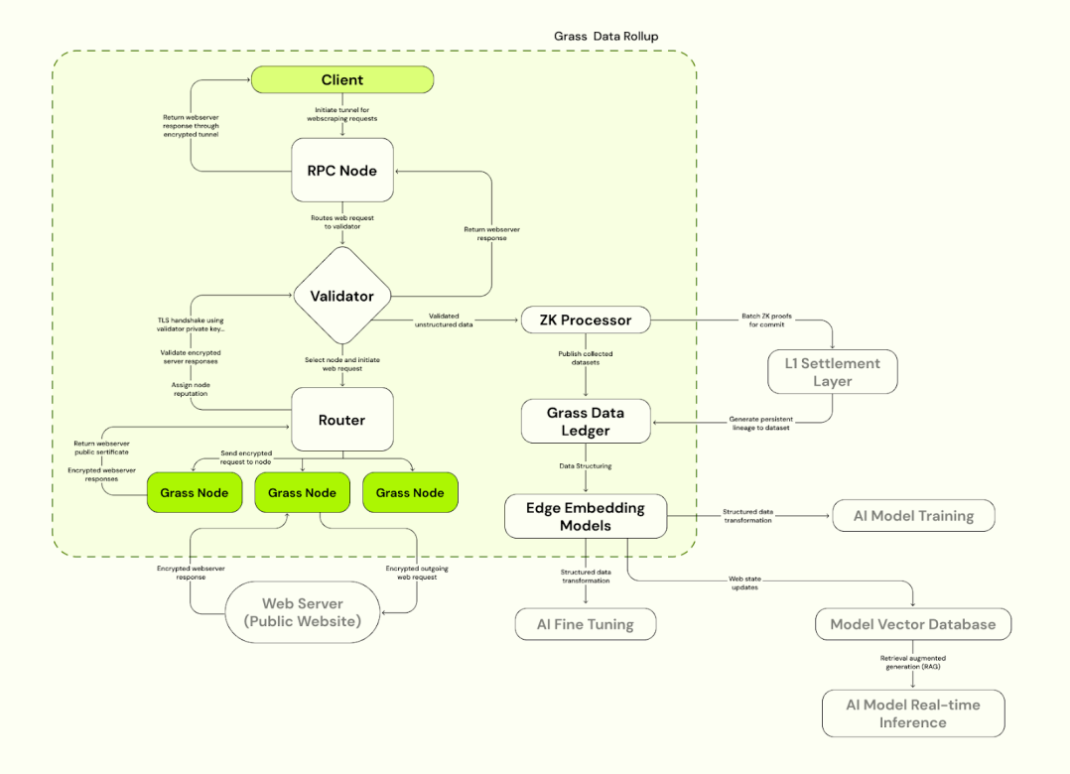
Source: Grass
Analysis and Comparison of Grass and OpenLayer
Both OpenLayer and Grass leverage distributed networks to provide companies with access to open internet data and closed information that requires authentication. They promote data sharing and the production of high-quality data through incentive mechanisms. Both are committed to creating a Decentralized Data Layer to address data access and verification issues, but they adopt slightly different technological paths and business models.
Differences in Technical Architecture
Grass uses a Layer 2 Data Rollup architecture on Solana, currently employing a centralized verification mechanism with a single validator. In contrast, OpenLayer, as one of the first AVS, is built on EigenLayer, utilizing economic incentives and confiscation mechanisms to achieve a decentralized verification mechanism. It also employs a modular design, emphasizing the scalability and flexibility of data verification services.
Product Differences
Both provide similar consumer-facing products, allowing users to monetize data through nodes. In B2B use cases, Grass offers an interesting data marketplace model and uses L2 to verifiably store complete data, providing structured, high-quality, verifiable training sets for AI companies. OpenLayer, on the other hand, does not currently have a dedicated data storage component but offers a broader real-time data stream verification service (VaaS), providing data for AI as well as for scenarios requiring rapid responses, such as feeding prices for RWA/DeFi/prediction market projects and providing real-time social data.
Thus, Grass's target customer base primarily focuses on AI companies and data scientists, providing large-scale, structured training datasets, and also serving research institutions and enterprises that require extensive web datasets; while OpenLayer temporarily targets on-chain developers needing off-chain data sources, AI companies requiring real-time, verifiable data streams, and Web2 companies supporting innovative user acquisition strategies, such as verifying competitive product usage history.
Future Potential Competition
However, considering industry development trends, the functionalities of the two projects may indeed converge in the future. Grass may soon also provide real-time structured data. As a modular platform, OpenLayer may also expand into dataset management and have its own data ledger, thus the competitive areas of the two may gradually overlap.
Moreover, both projects may consider incorporating data labeling as a key component. Grass may advance more quickly in this area due to its large node network—reportedly over 2.2 million active nodes. This advantage gives Grass the potential to provide reinforcement learning with human feedback (RLHF) services, utilizing a vast amount of labeled data to optimize AI models.
However, OpenLayer, with its expertise in data verification and real-time processing, may maintain an advantage in data quality and credibility due to its focus on private data. Additionally, as one of Eigenlayer's AVS, OpenLayer may have deeper developments in decentralized verification mechanisms.
Although the two projects may compete in certain areas, their unique advantages and technological paths may also lead them to occupy different niche markets within the data ecosystem.
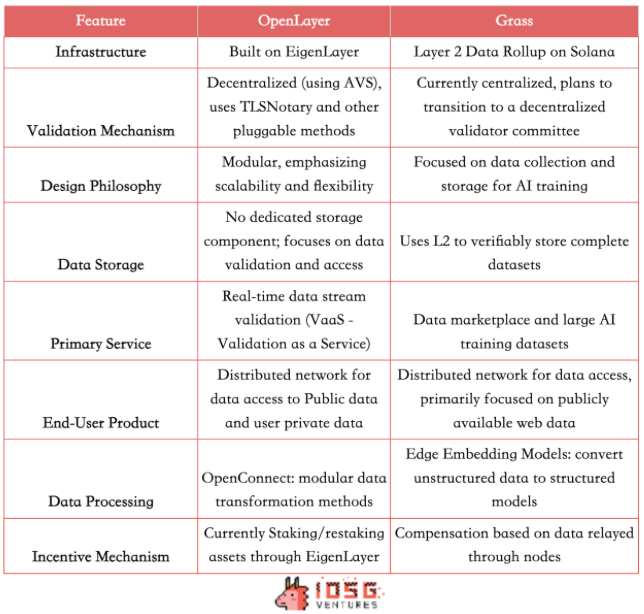
4.3 VANA
As a user-centric data pool network, Vana is also dedicated to providing high-quality data for AI and related applications. Compared to OpenLayer and Grass, Vana adopts a distinctly different technological path and business model. Vana completed a $5 million financing round in September 2024, led by Coinbase Ventures, following an $18 million Series A financing round led by Paradigm, with other notable investors including Polychain and Casey Caruso.
Originally launched in 2018 as a research project at MIT, Vana aims to become a Layer 1 blockchain specifically designed for users' private data. Its innovations in data ownership and value distribution enable users to profit from AI models trained on their data. The core of Vana is to facilitate the circulation and monetization of private data through a trustless, private, and attributable Data Liquidity Pool and an innovative Proof of Contribution mechanism:
4.3.1 Data Liquidity Pool
Vana introduces a unique concept of Data Liquidity Pools (DLP): as a core component of the Vana network, each DLP is an independent peer-to-peer network for aggregating specific types of data assets. Users can upload their private data (such as shopping records, browsing habits, social media activities, etc.) to specific DLPs and flexibly choose whether to authorize these data for use by specific third parties. Data is integrated and managed through these liquidity pools, with the data being de-identified to ensure user privacy while allowing the data to participate in commercial applications, such as for AI model training or market research.
Users submit data to the DLP and receive corresponding DLP tokens (each DLP has specific tokens) as rewards. These tokens not only represent the user's contribution to the data pool but also grant users governance rights over the DLP and future profit-sharing rights. Users can not only share data but also gain ongoing revenue from subsequent calls to the data (with visual tracking provided). Unlike traditional one-time data sales, Vana allows data to continuously participate in the economic cycle.
4.3.2 Proof of Contribution Mechanism
One of Vana's other core innovations is the Proof of Contribution mechanism. This is a key mechanism for Vana to ensure data quality, allowing each DLP to customize a unique contribution proof function based on its characteristics to verify the authenticity and integrity of data and assess the contribution of data to the performance improvement of AI models. This mechanism ensures that users' data contributions are quantified and recorded, thereby providing rewards to users. Similar to "Proof of Work" in cryptocurrency, Proof of Contribution allocates benefits to users based on the quality, quantity, and frequency of use of the data they contribute. It is automatically executed through smart contracts, ensuring that contributors receive rewards commensurate with their contributions.
Vana's Technical Architecture
- Data Liquidity Layer
This is the core layer of Vana, responsible for the contribution, verification, and recording of data to DLPs, introducing data as transferable digital assets on-chain. DLP creators deploy DLP smart contracts, setting the purpose of data contribution, verification methods, and contribution parameters. Data contributors and custodians submit data for verification, and the Proof of Contribution (PoC) module performs data verification and value assessment, granting governance rights and rewards based on the parameters.
- Data Portability Layer
This is an open data platform for data contributors and developers, and it serves as Vana's application layer. The Data Portability Layer provides a collaborative space for data contributors and developers to build applications using the liquidity of data accumulated in DLPs. It provides infrastructure for distributed training of User-Owned models and AI Dapp development.
- Connectome
A decentralized ledger, it is a real-time data flow graph that spans the entire Vana ecosystem, using Proof of Stake consensus to record real-time data transactions within the Vana ecosystem. It ensures the effective transfer of DLP tokens and provides cross-DLP data access for applications. It is EVM-compatible, allowing interoperability with other networks, protocols, and DeFi applications.
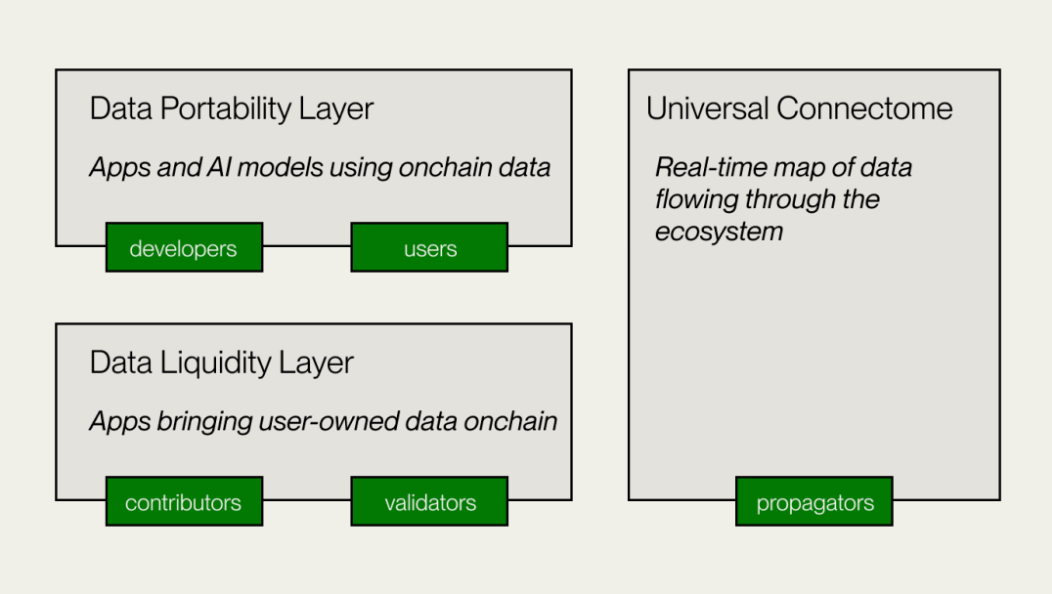
Vana offers a relatively different path, focusing on the liquidity and value empowerment of user data. This decentralized data exchange model is not only applicable to AI training and data markets but also provides a new solution for cross-platform interoperability and authorization of user data in the Web3 ecosystem, ultimately creating an open internet ecosystem where users own and manage their data, as well as the intelligent products created from that data.

5. Value Proposition of Decentralized Data Networks
Data scientist Clive Humby stated in 2006 that data is the oil of the new era. Over the past 20 years, we have witnessed rapid advancements in "refining" technologies. Big data analytics, machine learning, and other technologies have unprecedentedly released the value of data. According to IDC's forecast, by 2025, the global data sphere will grow to 163 ZB, with most of it coming from individual users. As emerging technologies such as IoT, wearable devices, AI, and personalized services become more widespread, a significant amount of commercially needed data will also originate from individuals.
Pain Points of Traditional Solutions: Unlocking Innovations in Web3
Web3 data solutions break through the limitations of traditional infrastructure through distributed node networks, achieving broader and more efficient data collection while enhancing the real-time acquisition efficiency and verification credibility of specific data. In this process, Web3 technology ensures the authenticity and integrity of data while effectively protecting user privacy, thereby realizing a fairer data utilization model. This decentralized data architecture promotes the democratization of data access.
Whether it is the user node model of OpenLayer and Grass or Vana's monetization of user private data, they not only improve the efficiency of specific data collection but also allow ordinary users to share in the dividends of the data economy, creating a win-win model for users and developers, enabling users to truly control and benefit from their data and related resources.
Through token economics, Web3 data solutions redesign incentive models, creating a fairer data value distribution mechanism. This has attracted a large number of users, hardware resources, and capital injection, thereby coordinating and optimizing the operation of the entire data network.
Compared to traditional data solutions, they also possess modularity and scalability: for example, OpenLayer's modular design provides flexibility for future technological iterations and ecosystem expansion. Thanks to technological characteristics, they optimize the data acquisition methods for AI model training, providing richer and more diverse datasets.
From data generation, storage, verification to exchange and analysis, Web3-driven solutions address many shortcomings of traditional infrastructure through unique technological advantages while also empowering users with the ability to monetize their personal data, triggering a fundamental shift in the data economy model. As technology continues to evolve and application scenarios expand, the decentralized data layer is expected to become a key infrastructure for the next generation, supporting a wide range of data-driven industries alongside other Web3 data solutions.
免责声明:本文章仅代表作者个人观点,不代表本平台的立场和观点。本文章仅供信息分享,不构成对任何人的任何投资建议。用户与作者之间的任何争议,与本平台无关。如网页中刊载的文章或图片涉及侵权,请提供相关的权利证明和身份证明发送邮件到support@aicoin.com,本平台相关工作人员将会进行核查。




